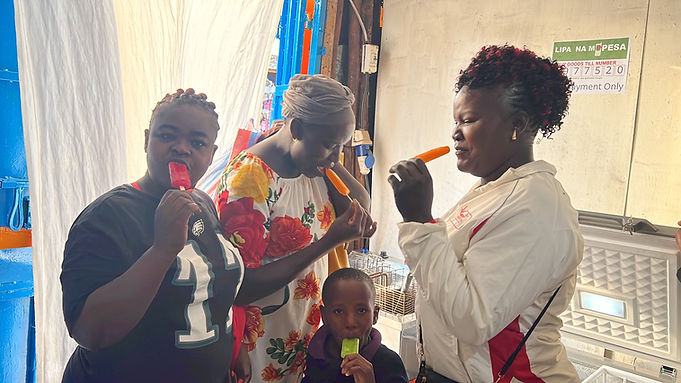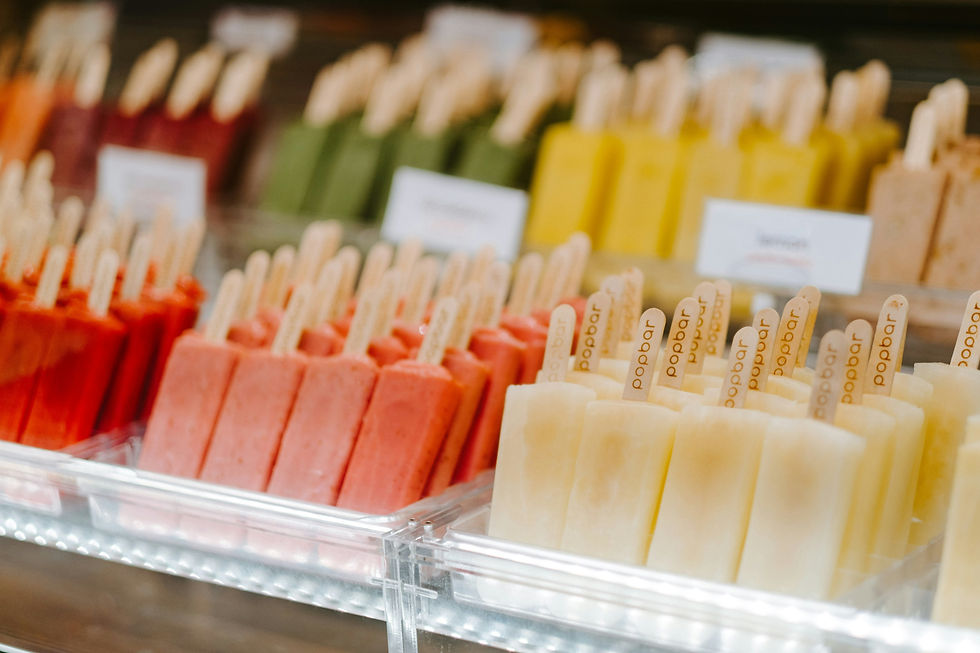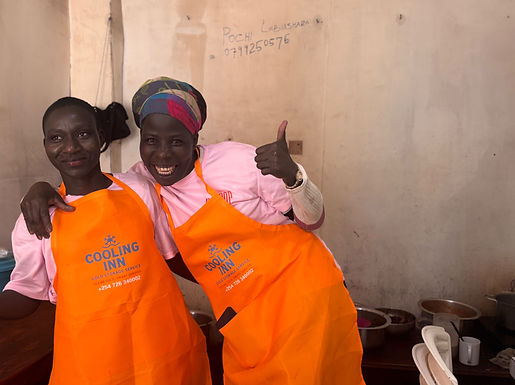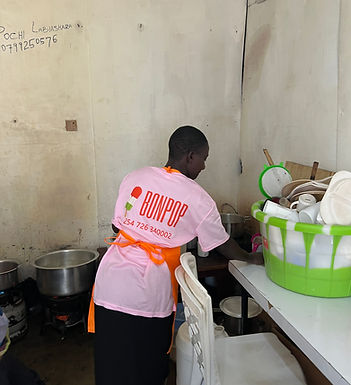“The Happiness Business”:
Why We Sell Ice Pops in Kenya
A Financial Empowerment Practice in the “Happiness Business”
Many friends who follow our work know that our project in Kenya began with what seemed like a simple idea: selling ice pops. When we first mentioned this, quite a few people were puzzled—why start a “non-essential” business in a place where even basic needs are not fully met?

01
Happiness Is Also a Necessity

While ice pops are not a staple food, happiness is unquestionably a basic human need. In tropical Kenya, more than half of the counties have year-round temperatures exceeding 30°C, and in the northwest, where the Kakuma Refugee Camp is located, temperatures often surpass 35°C. In such heat, an ice pop offers not only physical refreshment but also a simple, pure sense of joy.
A 30-Kenyan-shilling ice pop (about RMB 1.6) may seem insignificant, but data tells a different story: according to a consumer spending survey by the Central Bank of Kenya, ice products account for 17% of local household non-essential spending—well above candy (6%) and carbonated drinks (9%). This high-frequency, repeat consumption reflects the unique emotional value of ice products—they are not merely food, but also a vessel for emotions. This ability to create “small but certain happiness” reveals the value of ice, while reminding us that fulfilling people’s aspirations for a better life is itself a meaningful business.
02
Sweet Opportunities in
Developing Countries
In China during the 1980s, the street cry “White sugar ice pops—three cents each!” was a familiar summer refrain. Vendors pushing bicycles wrapped in quilts wove together the earliest “grassroots cold chain networks” with each sweet ice pop sold. From these street calls to the rise of brands like Yili and Modern, ice products have carried childhood memories while marking the progression of societal consumption levels.
In developing countries, the ice industry almost inevitably experiences explosive growth. Many Chinese cities have their own iconic ice cream brands—Beijing’s Beibingyang red hawthorn bars, Shanghai’s Bright ice pops, Xi’an’s Zhonglou milk pops, and more. These brands succeeded because the ice product industry is easy to start, with relatively low entry barriers. Through standardized production and chain operations, brands can grow from small workshops to dominating regional markets in just a few years. The distribution networks established through ice businesses also drive the development of cold chain logistics, dairy processing, and retail employment.



Kenya is at a similar stage of development. Urbanization is accelerating, the middle class is expanding, and demand for quality of life is increasing. However, unlike China, Kenya’s ice market remains relatively untapped—particularly in infrastructure-limited communities—presenting a huge market opportunity. More importantly, with over 60% of its population under 25, Kenya’s young consumers are receptive to novelty and eager to spend. A well-designed, flavorful ice brand can quickly spread through word-of-mouth among young people.
03
Chinese Experience Inside an Ice Pop

Choosing ice pops as our entry point draws directly from China’s success. Unlike complex manufacturing industries, ice production does not require advanced technology. The main ingredients—water, sugar, flavorings—are readily available, and equipment investment is relatively low. Yet, despite its simplicity, it carries immense job-creation potential—from raw material procurement to production, from cold chain logistics to point-of-sale retail, every step can employ significant labor. We focus particularly on women and young entrepreneurs, providing them with complete start-up support packages.
Equally important is the complementary philosophy seen in China’s ice industry development. In 1978, China’s All China Federation of Supply and Marketing Cooperatives launched an ambitious plan: each province was to produce ice pop machines so that every grassroots supply and marketing cooperative could own one, ensuring farmers nationwide could enjoy frozen treats. This required not only equipment distribution but also comprehensive technical training and operational support. In Hunan Province, for instance, the local food machinery plant organized seven training sessions, each combining theory and hands-on practice. They installed and tested each machine on-site, sending a technician with every delivery. This “teach a person to fish” model ensured every machine operated smoothly and every user mastered the skills. The scenes from that era remain vivid—at dawn, young women rushed to pick up ice pops, slung their boxes over their backs, and cheerfully carried “white sugar mung bean ice pops” to villages, bringing joy to countless households. Farmers can enjoy ice pops at home, and behind this simple happiness is the orderly promotion of the entire industrial system.

Our own brand, Bonpop, draws on the essence of this Chinese experience—working with local brands to provide entrepreneurs with freezers, digital management systems, and operational training. With minimal initial investment, entrepreneurs can enter the ice retail market at a low financial threshold. The high-frequency repeat purchases typical of ice products generate steady cash flow, offering predictable income for entrepreneurs. Our revenue-sharing model ensures stable earnings for them while driving consumption upgrades in their communities.


04
Digitally Empowering Micro-Businesses

What excites us most is that this project gives us an excellent platform to test the value of digital technology in grassroots commerce. Our IoT and ERP systems enable full-process digitization from inventory management to sales analysis.
For vendors who previously relied solely on experience, this system acts like a “smart brain.” They can instantly see which products sell best, when to restock, and even adjust orders based on weather forecasts. This data-driven approach boosts efficiency and reduces operational risk.
More importantly, the transaction data accumulated via the system builds credit histories for these micro-merchants, laying the groundwork for future access to financial services. We believe this “small data, big value” model can truly help grassroots businesses achieve sustainable growth.
Cooling Inn Project Equipment
It is now the turn of spring to summer in the southern hemisphere, and Kenya’s temperatures are climbing—perfect timing for ice pop sales to peak. Our partners are already preparing for the busy season, with new freezers being installed and training sessions in full swing.
We look forward to seeing women entrepreneurs, who once toiled in the heat, now running their own small businesses. We also look forward to children enjoying a simple after-school ice pop for just a few dozen shillings.
This is what we call the “Happiness Business”—it creates jobs, generates profits, and brings joy. Sometimes, changing the world doesn’t require a grand plan; a small ice pop can bring cool relief and hope to many.